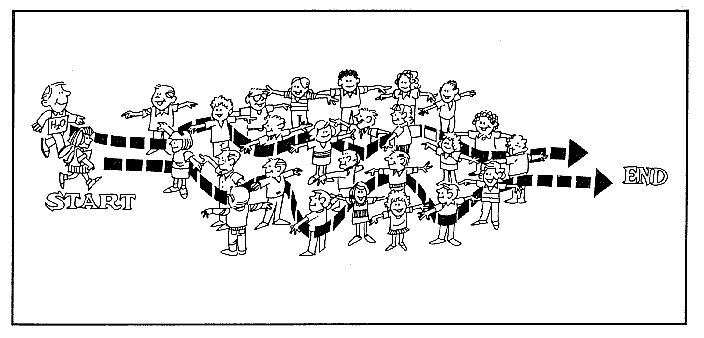Ground Water Poster - Grade School
Ground-Water Movement
Introduction
Ground water must be able to move through underground materials at rates fast enough to supply useful amounts of water to wells or springs in order for those materials to be classified as an aquifer. For water to move in an aquifer, some of the pores and fractures must be connected to each other. Water moves through different materials at different rates, faster through gravel, slower through sand, and even slower through clay. Gravels and sands are possible aquifers; clays usually are not aquifers. The following activity demonstrates how different sizes of rock materials that make up an aquifer affect water movement.
Objectives
Students will:
- Identify several sources of rock materials that make up an aquifer.
- Discuss how water moves through gravel, sand, and clay.
Materials
- At least 10 students.
- Large area to conduct activity.
Teacher Preparation
This activity can be conducted in the classroom, gymnasium, or outside the school building. If conducted in the classroom, move all furniture to allow for sufficient room for the movement of students. This is a three-part demonstration that may create some excitement.
Procedures
Select two or three students to be molecules of water. The remaining students will be rock materials.
- Activity One: Water movement through gravel. The students represent gravel by holding arms outstretched, leaving a 15- to 30- centimeter (cm) space between their outstretched arms. Locate these students in the center of the activity area. The students representing water molecules are to start on one side of their "gravel" classmates and move through them, exiting on the other side. The water molecules will move easily through the gravel.

 |
 |
 |

